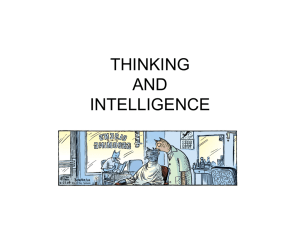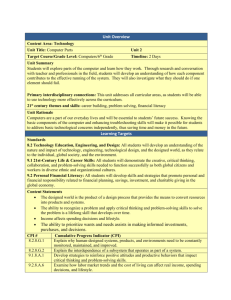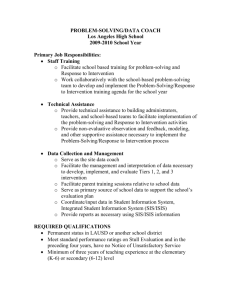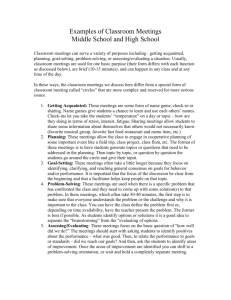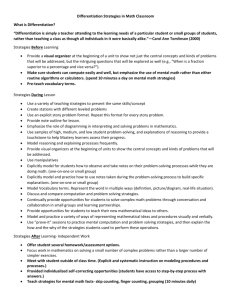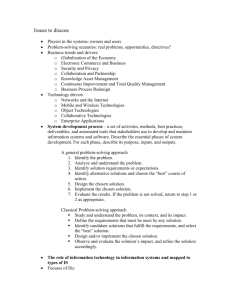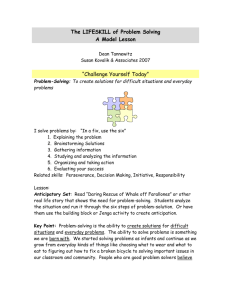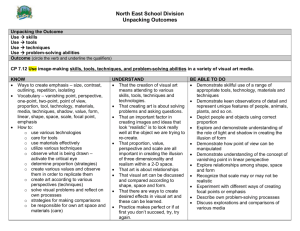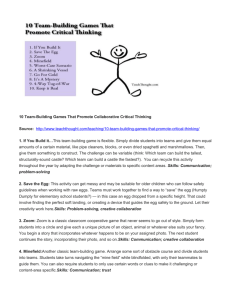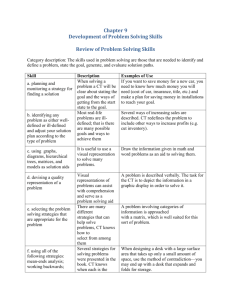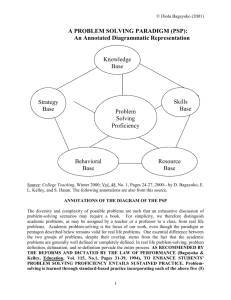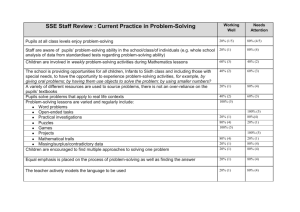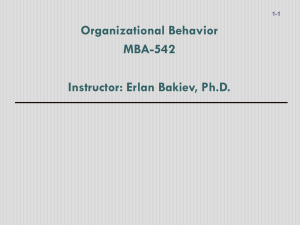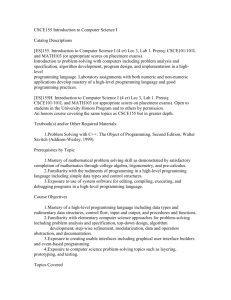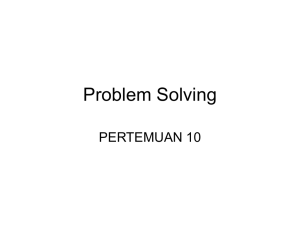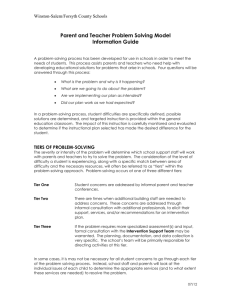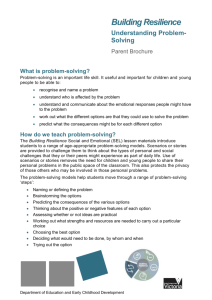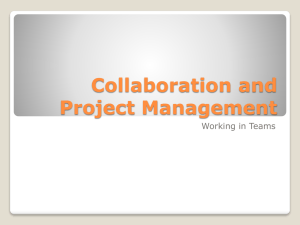Steps to Help Foster the Creative Problem Solving Process
advertisement
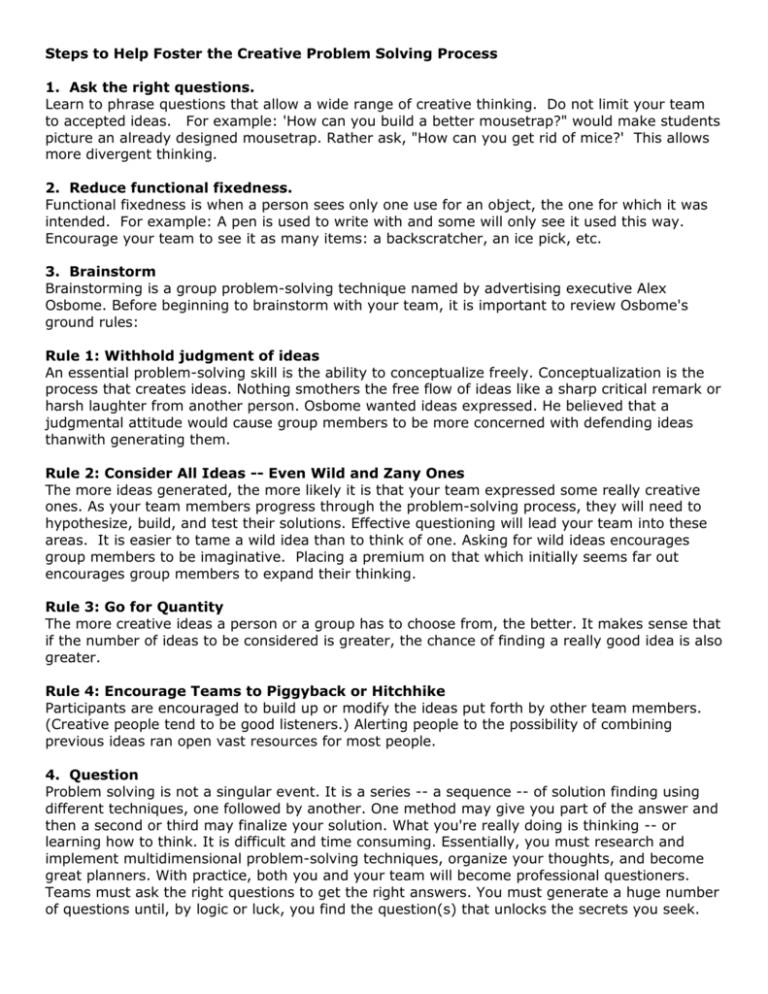
Steps to Help Foster the Creative Problem Solving Process 1. Ask the right questions. Learn to phrase questions that allow a wide range of creative thinking. Do not limit your team to accepted ideas. For example: 'How can you build a better mousetrap?" would make students picture an already designed mousetrap. Rather ask, "How can you get rid of mice?' This allows more divergent thinking. 2. Reduce functional fixedness. Functional fixedness is when a person sees only one use for an object, the one for which it was intended. For example: A pen is used to write with and some will only see it used this way. Encourage your team to see it as many items: a backscratcher, an ice pick, etc. 3. Brainstorm Brainstorming is a group problem-solving technique named by advertising executive Alex Osbome. Before beginning to brainstorm with your team, it is important to review Osbome's ground rules: Rule 1: Withhold judgment of ideas An essential problem-solving skill is the ability to conceptualize freely. Conceptualization is the process that creates ideas. Nothing smothers the free flow of ideas like a sharp critical remark or harsh laughter from another person. Osbome wanted ideas expressed. He believed that a judgmental attitude would cause group members to be more concerned with defending ideas thanwith generating them. Rule 2: Consider All Ideas -- Even Wild and Zany Ones The more ideas generated, the more likely it is that your team expressed some really creative ones. As your team members progress through the problem-solving process, they will need to hypothesize, build, and test their solutions. Effective questioning will lead your team into these areas. It is easier to tame a wild idea than to think of one. Asking for wild ideas encourages group members to be imaginative. Placing a premium on that which initially seems far out encourages group members to expand their thinking. Rule 3: Go for Quantity The more creative ideas a person or a group has to choose from, the better. It makes sense that if the number of ideas to be considered is greater, the chance of finding a really good idea is also greater. Rule 4: Encourage Teams to Piggyback or Hitchhike Participants are encouraged to build up or modify the ideas put forth by other team members. (Creative people tend to be good listeners.) Alerting people to the possibility of combining previous ideas ran open vast resources for most people. 4. Question Problem solving is not a singular event. It is a series -- a sequence -- of solution finding using different techniques, one followed by another. One method may give you part of the answer and then a second or third may finalize your solution. What you're really doing is thinking -- or learning how to think. It is difficult and time consuming. Essentially, you must research and implement multidimensional problem-solving techniques, organize your thoughts, and become great planners. With practice, both you and your team will become professional questioners. Teams must ask the right questions to get the right answers. You must generate a huge number of questions until, by logic or luck, you find the question(s) that unlocks the secrets you seek. Encourage team members to question one another. Be careful not to ask leading questions or ones which you already know the answer you have in mind. Begin by asking your team: What is the problem statement asking you to do? Can you rewrite the problem in your own words? Do you have the skills to accomplish the task? What research would help give you the background you need? Ask additional question(s) generated by the research. Concentrate on the key points, those elements of the problem by which the team will be judged. For each point, begin developing questions. Isolate the specific element of the problem you want to solve. Ask many questions, in a series, about the process, subject, thing, etc. Don't be too general or too vague. Try to be specific, narrowing the questioning. 5. Restate questions as statements and hypothesis, if needed. Examples: What should be done? Why is it necessary? When should it be done? Where should it be done? Who should do it? How should it be done? What about? What if? Can this be tested? What kinds of tests are best? What could be omitted? What could be carried to extremes? How could we make this lighter? How could this be done faster? How else can this be arranged? What if we change the order? What should come next? What about cause and effect? What are the negatives? How can this be streamlined? How can we improve the appeal? Could we make it cheaper? Would an assembly line work? Who else could do this better? How can we add more value? How could we make this stronger? 6. Generate Ideas. How do team members get ideas for solving the OM problems? Try some of these suggestions! 1. Dedicate one practice to forming a "Think Tank". Limit the agenda to listing ideas. 2. Have everyone on the team carry a notebook and record ideas as they occur during the day, prior to sleeping, upon waking. Organize these into one collective, large book. 3. Read. Explore. Learn historical background information. 4. Conduct informal research such as scanning magazines, watching movies, TV, etc. 5. Conduct formal research online and in books. 6. Develop a survey and implement it. Interview experts in the field. 7. Ask each team member to produce 50 ideas. Evaluate, reduce, and combine these ideas. 8. Start a "big box" containing idea starters, clippings, printed matter, notes, sketches, etc. 9. Set a deadline. Have team members submit their ideas on a pre-determined time line. 10. Set a quota of at least 5 ideas per day. It is likely that many more will occur. 11. Have team members do thinking at the start of practice. Save routine tasks for later. 12. Go where the ideas are. Have the team travel to locations that might encourage creativity. Field trips away from usual meeting places can be inspiring.

